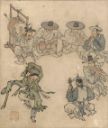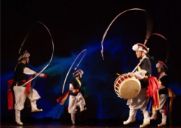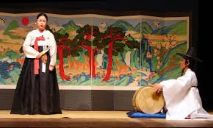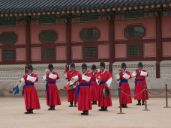Marching to the beat of your own drum
The existence of Puk can be traced as far back as the Three Kingdoms of Korea (57 BC-668 AD) and therefore has had a long history.
There are as many different purposes as there are different kinds of ‘Puk’. Even though in total there are up to twenty different types, we will look here at the most commonly used ones presented in Korean culture and society: the Puk, the Janggu and the Yonggo. These drums are used in three different genres of traditional music: Samulnori, P’ansori and Daech’wita.
Samulnori, literally means ‘four objects’ (samul) and ‘play’ (nori). This type of music genre was originally performed in rice-farming villages to ensure a good harvest. A Samulnori performance consists of music, dance, acrobatics and performances. The four objects are the following instruments: a Janggu, a Puk, a Kkwaenggwari (small gong) and a Jing (a larger gong). The Janggu is an hourglass-shaped drum. The two heads of the drum produce different sounds, together representing the harmony of man and woman. The Puk used for Samulnori is the same one as portrayed in this picture and is recognizable for its round body and smaller size.
P’ansori, on the other hand, is a musical storytelling by a singer and a drummer who uses the same Puk as used in Samulnori. These performances can last for six hours and are accompanied by body movements. P’ansori used to be a kind of folk entertainment for the lower classes, but gradually became more and more popular among the elite in Korea as well.
Daech’wita is another genre of music where a form of Pukis used. Daech’wita (literally translated as great hitting) is military music, generally performed when marching. The kind of Puk that is used during these marches is called a Yonggo and is striking due to its dragon designs painted on the body. In 2020, Agust D, a member from the popular boy band BTS, released a song called Daech’wita. This song, as the name suggests, is heavily inspired and actually samples traditional Daech’wita (drum visible on 1:43-1:50).




